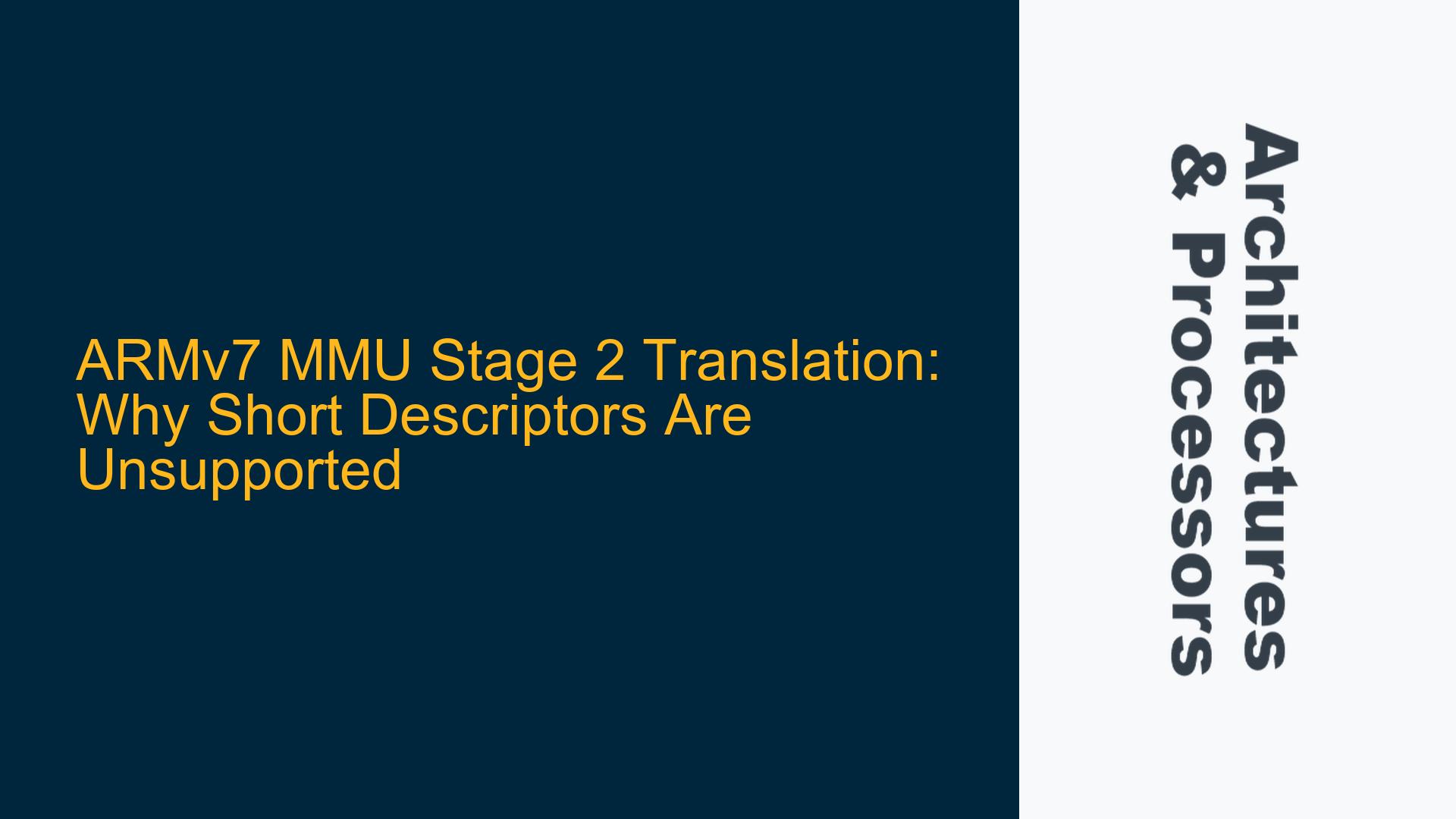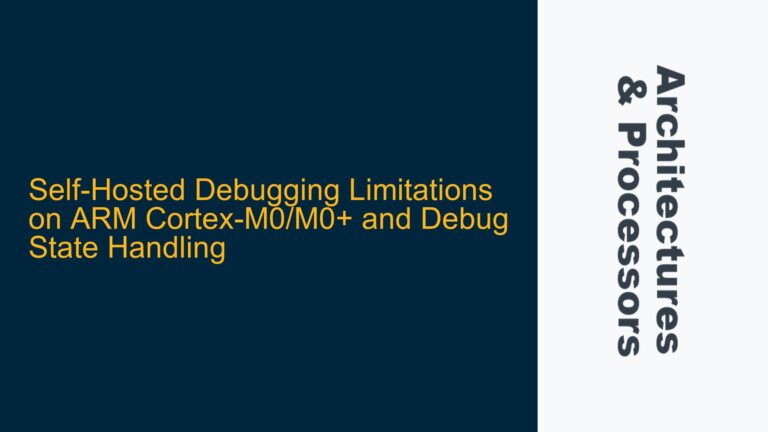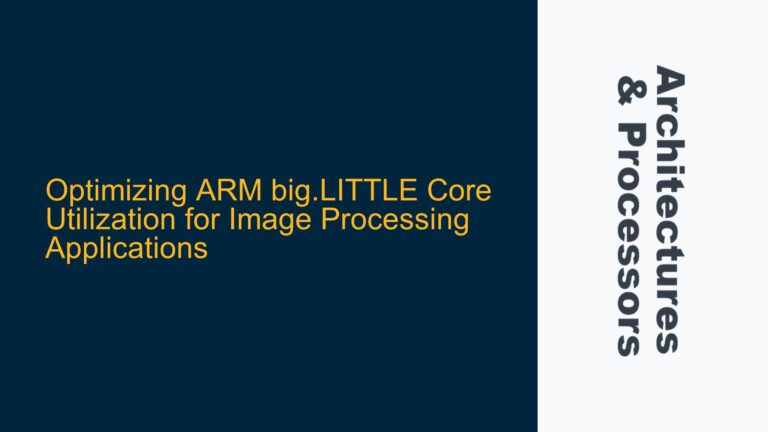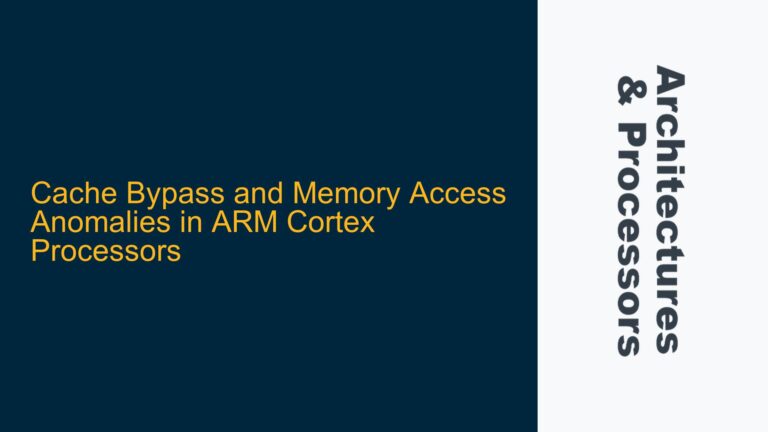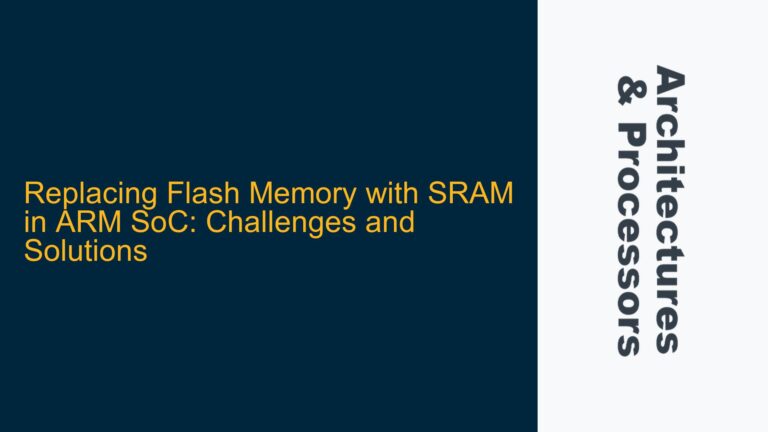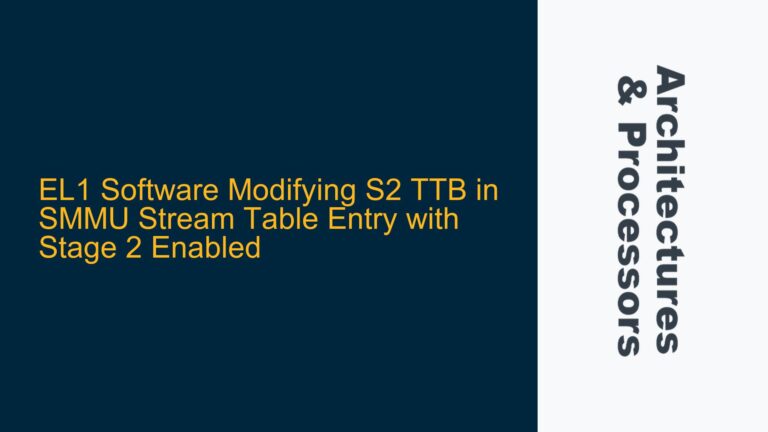ARMv7 MMU Stage 2 Translation and Short Descriptor Limitations
The ARMv7 Memory Management Unit (MMU) architecture introduces a two-stage translation mechanism for virtual memory management, particularly in the context of virtualization and secure monitor code. Stage 1 translation is used for standard virtual-to-physical address translation, while Stage 2 translation is employed in hypervisor or secure monitor contexts to manage guest physical addresses (GPA) to host physical addresses (HPA). A key architectural decision in ARMv7 is the restriction of short descriptor formats exclusively to Stage 1 translations at Exception Levels EL0 and EL1. This restriction raises questions about the underlying reasons and implications for system designers and firmware developers.
The short descriptor format, which was introduced earlier in ARM’s MMU history, provides a compact and efficient way to describe memory mappings for 32-bit address spaces. However, ARMv7 explicitly prohibits the use of short descriptors in Stage 2 translations, hypervisors, and secure monitor code. This limitation is rooted in a combination of architectural complexity, address space requirements, and backward compatibility considerations. Understanding these factors is critical for developers working on virtualization, secure firmware, or low-level system software for ARMv7-based systems.
Architectural Complexity and Address Space Constraints
One of the primary reasons for the exclusion of short descriptors in Stage 2 translations is the increased complexity it would introduce to the Translation Lookaside Buffers (TLBs) and the overall MMU design. TLBs are hardware caches that store recently used virtual-to-physical address translations to accelerate memory access. Supporting both short and long descriptor formats in Stage 2 would require TLBs to handle multiple translation formats simultaneously, significantly increasing their complexity and potentially impacting performance.
The short descriptor format is optimized for 32-bit address spaces, which limits its utility in modern systems that require larger physical address spaces. ARMv7 introduced the Large Physical Address Extension (LPAE), which supports 40-bit physical addresses using the long descriptor format. Virtualization scenarios, in particular, benefit from LPAE because they often involve managing multiple guest operating systems, each with its own memory space. The long descriptor format is better suited for these use cases, as it provides the necessary address space flexibility and granularity.
Additionally, the short descriptor format lacks certain features required for advanced memory management in hypervisors and secure monitors. For example, it does not support nested page tables or extended access control mechanisms, which are essential for efficient virtualization and secure execution environments. By restricting Stage 2 translations to the long descriptor format, ARM ensures that these advanced features are consistently available without complicating the hardware design.
Compatibility and Migration Path Considerations
Another critical factor in the exclusion of short descriptors from Stage 2 translations is compatibility. The short descriptor format predates the introduction of virtualization and LPAE in ARMv7. When ARM introduced the long descriptor format, it provided a migration path for existing software to transition from the older format. However, this migration path was primarily targeted at Stage 1 translations, where legacy code might still rely on short descriptors.
In contrast, Stage 2 translations were introduced alongside virtualization and LPAE, meaning there was no legacy code using short descriptors in this context. This allowed ARM to mandate the use of the long descriptor format for Stage 2 translations without disrupting existing software ecosystems. By doing so, ARM simplified the design of hypervisors and secure monitors, as they could rely on a single, consistent translation format.
The decision to support short descriptors in Stage 1 translations at EL0 and EL1 was driven by the need to maintain backward compatibility with existing operating systems and applications. Many legacy systems were designed with the assumption of a 32-bit address space and relied on the short descriptor format for memory management. By continuing to support short descriptors in Stage 1, ARM ensured that these systems could continue to function without requiring extensive modifications.
Implementing Long Descriptor Format in Stage 2 Translations
For developers working on hypervisors or secure monitor code, the restriction to the long descriptor format in Stage 2 translations necessitates a thorough understanding of its structure and usage. The long descriptor format uses a 64-bit page table entry, which provides greater flexibility in defining memory mappings. Each entry includes fields for the base address, memory attributes, access permissions, and other control bits.
To implement Stage 2 translations using the long descriptor format, developers must configure the hypervisor or secure monitor to use the appropriate page table structures. This involves setting up the Stage 2 translation tables and configuring the relevant control registers in the ARMv7 MMU. The Hypervisor Translation Table Base Register (HTTBR) is used to specify the base address of the Stage 2 translation tables, while the Hypervisor Translation Control Register (HTCR) controls the behavior of the Stage 2 MMU.
One of the key advantages of the long descriptor format is its support for nested page tables, which are essential for efficient virtualization. Nested page tables allow the hypervisor to manage the memory mappings of multiple guest operating systems independently, reducing the overhead associated with context switches. By leveraging the long descriptor format, developers can implement sophisticated memory management schemes that optimize performance and security in virtualized environments.
In addition to configuring the page tables, developers must ensure that the TLBs are properly managed to maintain consistency between Stage 1 and Stage 2 translations. This may involve invalidating TLB entries when modifying page tables or switching between different guest operating systems. ARMv7 provides instructions such as TLBIALL (Invalidate All TLB Entries) and TLBIASID (Invalidate TLB Entries by ASID) to facilitate TLB management.
Performance Implications and Optimization Strategies
The use of the long descriptor format in Stage 2 translations has performance implications that developers must consider. While the long descriptor format provides greater flexibility and support for larger address spaces, it also increases the size of the page tables and the complexity of the translation process. This can lead to higher memory usage and potentially slower translation times compared to the short descriptor format.
To mitigate these performance impacts, developers can employ several optimization strategies. One approach is to use large pages in the Stage 2 translation tables, which reduces the number of entries required to map a given address space. ARMv7 supports page sizes of up to 1GB in the long descriptor format, allowing developers to minimize the size of the page tables and improve TLB efficiency.
Another optimization strategy is to leverage hardware features such as the Translation Table Walk Cache (TTWC), which caches intermediate results of the page table walk process. By reducing the number of memory accesses required for translation, the TTWC can significantly improve performance in systems with large address spaces or complex memory mappings.
Developers should also consider the impact of Stage 2 translations on system latency and responsiveness. In real-time or latency-sensitive applications, excessive TLB misses or page table walks can degrade performance. Careful tuning of the page table structure and TLB management policies can help minimize these effects and ensure that the system meets its performance requirements.
Security Considerations in Stage 2 Translations
The use of the long descriptor format in Stage 2 translations also has important security implications. Hypervisors and secure monitors must ensure that guest operating systems cannot access unauthorized memory regions or interfere with the operation of other guests. The long descriptor format provides robust access control mechanisms that can be used to enforce these security policies.
Each page table entry in the long descriptor format includes fields for access permissions, memory attributes, and domain control. These fields allow developers to define fine-grained access policies for different memory regions, ensuring that guests can only access the resources they are authorized to use. For example, a hypervisor can use the access permission bits to restrict a guest’s access to sensitive memory regions, such as those containing firmware or other guests’ data.
In addition to access control, the long descriptor format supports features such as Execute Never (XN) and Privileged Execute Never (PXN), which can be used to prevent the execution of unauthorized code. These features are particularly important in secure monitor code, where preventing code injection attacks is critical to maintaining system integrity.
Developers must also consider the security implications of TLB management in Stage 2 translations. Improper handling of TLB entries can lead to vulnerabilities such as privilege escalation or information leakage. To mitigate these risks, developers should ensure that TLB entries are properly invalidated when switching between guests or modifying page tables. ARMv7 provides instructions such as TLBIALL and TLBIASID to facilitate secure TLB management.
Conclusion
The restriction of short descriptors to Stage 1 translations in ARMv7 MMU architecture is a deliberate design choice driven by considerations of complexity, address space requirements, and compatibility. By mandating the use of the long descriptor format in Stage 2 translations, ARM ensures that hypervisors and secure monitors have access to the advanced features and flexibility needed for modern virtualization and secure execution environments.
Developers working on ARMv7-based systems must be aware of these architectural constraints and understand how to effectively implement and optimize Stage 2 translations using the long descriptor format. By leveraging the capabilities of the long descriptor format and employing best practices for TLB management and performance optimization, developers can build robust and efficient systems that meet the demands of today’s complex workloads.
Understanding the rationale behind ARM’s design decisions and the implications for system implementation is essential for anyone working with ARMv7 MMU architecture. Whether you are developing a hypervisor, secure firmware, or low-level system software, a deep knowledge of Stage 2 translations and the long descriptor format will enable you to create high-performance, secure, and reliable systems.
